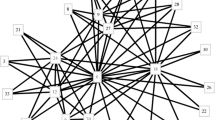Abstract.
The shuffle product of two words consists of all words obtained by inserting one word into another word sparsely. The shuffle product of two languages is the union of all the shuffle products of two words taken one from each of these two languages. The bi-catenation of two languages A andB is the set \(A\star B = AB\cup BA\). A non-empty word which is not a power of any other word is called a primitive word. A language is a prefix code if no word in this language is a prefix of any other word in this language. This paper is devoted to the investigation of the elementary properties of bi-catenation and shuffle product of languages. The families of prefix codes, disjunctive languages and languages consisting of primitive words with respective to these two operations are studied. We characterize languages of which the bi-catenation or the shuffle product with any non-empty word are prefix codes. We also derive that for any bifix code A, both \(A\star Q\) and \(A\star Q^{(n)}\), \(n\geq 2\), are disjunctive languages, where Q is the set of all primitive words over an alphabet X with more than one letter and \(Q^{(n)} = \{ f^n\mid f\in Q\}\). For the shuffle product case, surprisingly \(a\diamond Q\) is a regular language, where a is a letter of the alphabet X.
Similar content being viewed by others
Author information
Authors and Affiliations
Additional information
Received: 22 September 1997 / 7 January 1998
Rights and permissions
About this article
Cite this article
Shyr, H., Yu, S. Bi-catenation and shuffle product of languages. Acta Informatica 35, 689–707 (1998). https://doi.org/10.1007/s002360050139
Issue Date:
DOI: https://doi.org/10.1007/s002360050139




